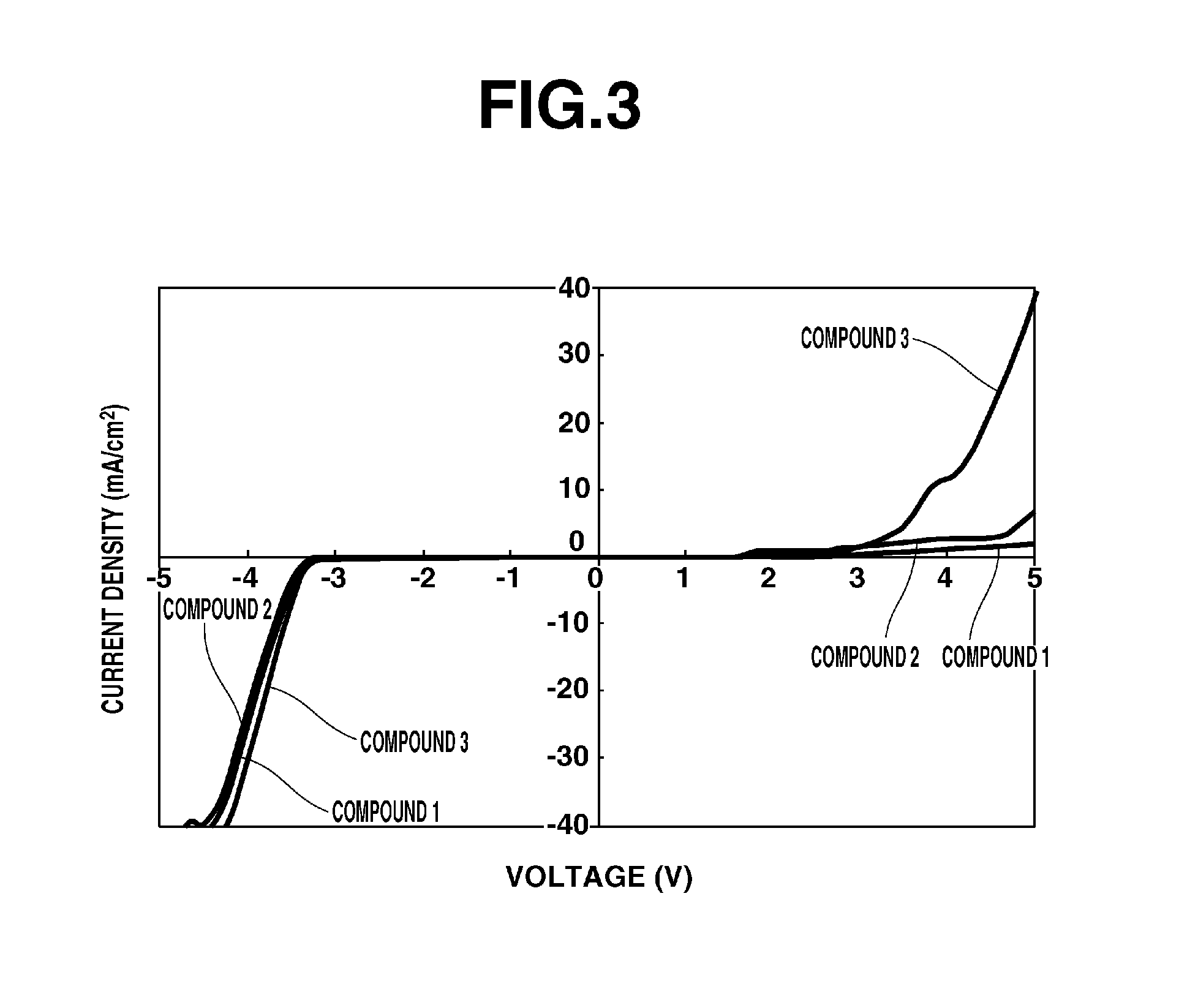Ionic liquid
a technology of ionic liquid and halogen-free ionic liquid, which is applied in the field of ionic liquid, can solve the problems of poor heat resistance, high viscosity, and physical properties of ordinary fluorine-containing anion-containing ionic liquid, and achieves excellent heat resistance, small environmental impact, and wide potential window
- Summary
- Abstract
- Description
- Claims
- Application Information
AI Technical Summary
Benefits of technology
Problems solved by technology
Method used
Image
Examples
example 1
Synthesis of Compound (1)
[0052]Compound 1 of the following formula was synthesized.
[0053]
[0054]Pyrrolidine (Wako Pure Chemical Industries, Ltd.), 1.51 parts by weight, and 2-methoxyethyl chloride (Kanto Chemical Co., Inc.), 1.00 part by weight, were mixed together and reacted for 1 hour under refluxing. Following the reaction, the reaction mixture was separated into two phases, then left to cool for a while, whereupon the bottom phase solidified. The top phase alone was collected by decantation, and purification was carried out by vacuum distillation. This distillation gave 0.96 part by weight of the target substance N-2-methoxyethylpyrrolidine (boiling point, 76° C.; vapor pressure, 45 mmHg) in a yield of 70%.
[0055]Next, 1.00 part by weight of the resulting N-2-methoxyethylpyrrolidine was mixed with a two-fold volume of toluene (Wako Pure Chemical Industries, Ltd.), the mixture was placed in an autoclave and the interior of the system was flushed with nitrogen. The system was close...
example 2
Synthesis of Compound 2
[0059]Compound 2 of the following formula was synthesized.
[0060]
[0061]Aside from using sodium 2-(trimethylsilyl)-1-ethanesulfonate instead of sodium 3-(trimethylsilyl)-1-propanesulfonate, Compound 2 was synthesized as a liquid by the same method as in Example 1. The sodium 2-(trimethylsilyl)-1-ethanesulfonate was synthesized according to the method described in U.S. Pat. No. 3,141,898.
[0062]The 1H-NMR spectrum of the resulting Compound 2 is shown in FIG. 2.
[0063]A melting point was not observed for Compound 2. The glass transition point was −70° C. and the decomposition point was 285° C.
PUM
| Property | Measurement | Unit |
|---|---|---|
| melting point | aaaaa | aaaaa |
| melting point | aaaaa | aaaaa |
| melting point | aaaaa | aaaaa |
Abstract
Description
Claims
Application Information
 Login to View More
Login to View More - R&D
- Intellectual Property
- Life Sciences
- Materials
- Tech Scout
- Unparalleled Data Quality
- Higher Quality Content
- 60% Fewer Hallucinations
Browse by: Latest US Patents, China's latest patents, Technical Efficacy Thesaurus, Application Domain, Technology Topic, Popular Technical Reports.
© 2025 PatSnap. All rights reserved.Legal|Privacy policy|Modern Slavery Act Transparency Statement|Sitemap|About US| Contact US: help@patsnap.com



